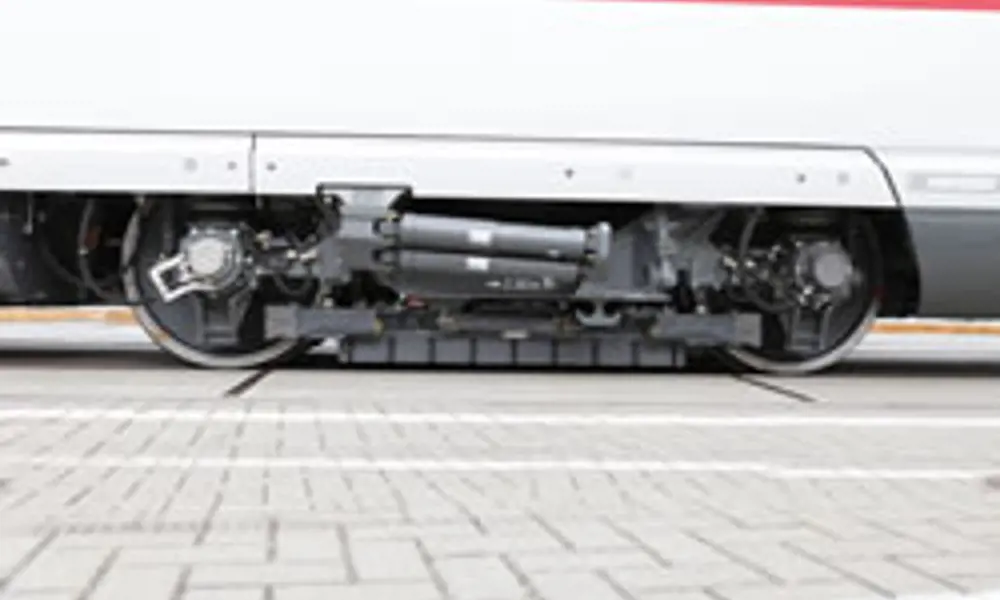
How does that work? - Eddy-current braking
© Knorr-Bremse
At speeds above 350km/h conventional train brakes, which rely on friction, cannot stop a train within an acceptably short distance. With increasingly longer, heavier and faster trains being introduced, braking has become a major technical problem requiring a novel solution.
The breakthrough: In recent years French, German and Japanese rail engineers have developed eddy-current braking, a wear-free system that bypasses the practical problems of wheel-to-rail adhesion, such as skidding.
Eddy-currents are a characteristic of Lenz’s law published in 1834. Russian physicist Heinrich Lenz determined that an induced current always has a direction where its magnetic field opposes the magnetic field causing the current flow. Eddy-currents develop secondary flux that cancels part of the external flux. These currents are capable of creating heat-producing resistance as the eddy-currents circulate in the rail directly below the coils. This produces a brake force opposing the direction of movement, powerful enough to slow a high-speed train.
Today, train operators are using Lenz’s law to great effect. In Germany’s latest ICE3 trains, bogies carry two 1540mm-long magnets with eight coils. In braking, the magnets are lowered to just 7mm above the rail-head. The energised coils induce an opposite magnetic force which acts against the motion of the train, giving a powerful and almost constant deceleration down to 50km/h when conventional brakes take over.
Keep up-to-date with Ingenia for free
SubscribeOther content from Ingenia
Quick read

- Environment & sustainability
- Opinion
A young engineer’s perspective on the good, the bad and the ugly of COP27

- Environment & sustainability
- Issue 95
How do we pay for net zero technologies?
Quick read

- Transport
- Mechanical
- How I got here
Electrifying trains and STEMAZING outreach

- Civil & structural
- Environment & sustainability
- Issue 95